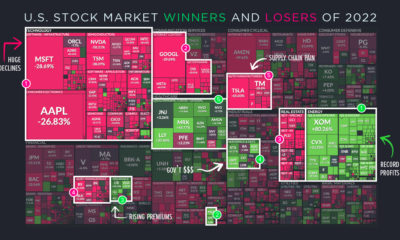In 2019, Newmont produced 6.3 million ounces of gold and earned a net income of $2.9B and returned $1.4B to shareholders in dividends. This infographic from Corvus Gold looks at the requirements and stages a mining company could face along its journey from a mineral prospect to a global mining company.
The Odds of Discovery
There are 510 million km2 (196,900,000 square miles) on the surface of the Earth and the crust is on average 40 kilometers thick (24 miles). Somewhere in there lie the next deposits of gold. Mineral exploration companies use drill bits that range in diameter from 76-320 millimeters to explore the subsurface. The deepest drill hole is the Kola Superdeep Borehole which measured 12.2 kilometers (7.6 miles). However, most mineral exploration companies rarely drill longer than a kilometer. Finding a gold deposit, let alone an economic one is akin to using a hair to find a needle in the proverbial haystack. To mitigate this, a typical junior mining company improves its odds by building a portfolio of properties that show potential through hints of gold and other minerals revealed from surface sampling, aerial magnetic surveys, and historic data. Then, to dig even deeper, a company can raise capital privately for the properties that show potential. Valuations of these mineral properties are largely subjective and difficult to establish. But if the company would like to raise further capital for more expensive exploration, it can tap into stock exchanges. Canada’s Toronto (TSX) and Venture Stock Exchanges (TSXV) sit at the center of global mining finance. Over the past five years, companies listed on TSX and TSXV completed 53% of all global mining financings, amounting to $44 billion through 6,500 transactions.
Risk Capital: TSX-V Listing Requirements
In 2020, there were 606 companies on the TSXV that have a gold property, or a property that showed potential to host a gold deposit. These companies met a minimum set of requirements to access public markets for further funding.
At this stage, a listed mining company will deploy capital to conduct geological sampling and drilling to produce technical studies that could improve the confidence of the presence of a mineable gold deposit.
If this round of work results in an improved understanding of a gold property, a company can move from Tier 2 to Tier 1 on the TSXV, allowing it to raise further capital to increase the scope of technical and economic studies.
TSX Venture Listing Requirements:
At this point, a company should have a good understanding of the costs and methods to produce a profitable operation or the value of a resource. However, early investors take their profits and new ones are needed to take a mineral property to a mining operation.
Financing Growth: TSX Listing Requirements
To develop and construct a mine, mining companies require larger amounts for development and construction, which requires a different class of investor and stricter requirements.
In 2020, there were 133 gold companies listed on the Toronto Stock Exchange, whose primary metal production is gold and/or own a gold property. These companies meet or exceed a set of listing requirements set out by the exchange.
The TSX has three categories of listing for mining issuers: TSX Exempt Issuers, TSX Non-Exempt Producer and TSX Non-Exempt Exploration and Development Stage. These requirements of these categories reflect the stage of development of the issuer at the time of listing. Exempt issuers are more advanced and so subject to less stringent reporting requirements.
TSX Listing Requirements:
At this stage, bankers and lawyers set up the financing of a project based on geological and economic studies. Good financing terms can enhance the potential value of a mineral deposit and attract investors.
But sometimes, just this one listing is not enough to allow a company or project to meet its full potential.
Expanding Shareholders: NASDAQ and NYSE Listing Requirements
Companies that require more capital or to meet corporate governance rules in the countries they work in can seek a listing on additional stock exchange markets outside of their home countries. There are several benefits of additional listings: The NASDAQ and New York Stock Exchange (NYSE) can improve access to the American market. There are only 76 gold mining companies listed on the NASDAQ and NYSE exchanges.
Increased trading, world-class investors, and a well-run operation can deliver a mining company a lot of prestige and generate significant returns. Ultimately, the continued success of the company will rely on its ability to maintain production and continue to deliver gold to the market. This all comes back to a company’s ability to find, develop, and exploit new gold deposits.
Building Mineral Wealth to Last
The project development timeline and mine lifecycle is a very long one. It can take decades to move from discovery to production. Each stage requires different amounts of capital and investors. The odds of building a mine are stacked against a junior mining company—but for the few that grow through the listing process requirements, they can become the next great investment. A mineral discovery is rare, but a successful gold mining company is even rarer. on Did you know that nearly one-fifth of all the gold ever mined is held by central banks? Besides investors and jewelry consumers, central banks are a major source of gold demand. In fact, in 2022, central banks snapped up gold at the fastest pace since 1967. However, the record gold purchases of 2022 are in stark contrast to the 1990s and early 2000s, when central banks were net sellers of gold. The above infographic uses data from the World Gold Council to show 30 years of central bank gold demand, highlighting how official attitudes toward gold have changed in the last 30 years.
Why Do Central Banks Buy Gold?
Gold plays an important role in the financial reserves of numerous nations. Here are three of the reasons why central banks hold gold:
Balancing foreign exchange reserves Central banks have long held gold as part of their reserves to manage risk from currency holdings and to promote stability during economic turmoil. Hedging against fiat currencies Gold offers a hedge against the eroding purchasing power of currencies (mainly the U.S. dollar) due to inflation. Diversifying portfolios Gold has an inverse correlation with the U.S. dollar. When the dollar falls in value, gold prices tend to rise, protecting central banks from volatility. The Switch from Selling to Buying In the 1990s and early 2000s, central banks were net sellers of gold. There were several reasons behind the selling, including good macroeconomic conditions and a downward trend in gold prices. Due to strong economic growth, gold’s safe-haven properties were less valuable, and low returns made it unattractive as an investment. Central bank attitudes toward gold started changing following the 1997 Asian financial crisis and then later, the 2007–08 financial crisis. Since 2010, central banks have been net buyers of gold on an annual basis. Here’s a look at the 10 largest official buyers of gold from the end of 1999 to end of 2021: Rank CountryAmount of Gold Bought (tonnes)% of All Buying #1🇷🇺 Russia 1,88828% #2🇨🇳 China 1,55223% #3🇹🇷 Türkiye 5418% #4🇮🇳 India 3956% #5🇰🇿 Kazakhstan 3455% #6🇺🇿 Uzbekistan 3115% #7🇸🇦 Saudi Arabia 1803% #8🇹🇭 Thailand 1682% #9🇵🇱 Poland1282% #10🇲🇽 Mexico 1152% Total5,62384% Source: IMF The top 10 official buyers of gold between end-1999 and end-2021 represent 84% of all the gold bought by central banks during this period. Russia and China—arguably the United States’ top geopolitical rivals—have been the largest gold buyers over the last two decades. Russia, in particular, accelerated its gold purchases after being hit by Western sanctions following its annexation of Crimea in 2014. Interestingly, the majority of nations on the above list are emerging economies. These countries have likely been stockpiling gold to hedge against financial and geopolitical risks affecting currencies, primarily the U.S. dollar. Meanwhile, European nations including Switzerland, France, Netherlands, and the UK were the largest sellers of gold between 1999 and 2021, under the Central Bank Gold Agreement (CBGA) framework. Which Central Banks Bought Gold in 2022? In 2022, central banks bought a record 1,136 tonnes of gold, worth around $70 billion. Country2022 Gold Purchases (tonnes)% of Total 🇹🇷 Türkiye14813% 🇨🇳 China 625% 🇪🇬 Egypt 474% 🇶🇦 Qatar333% 🇮🇶 Iraq 343% 🇮🇳 India 333% 🇦🇪 UAE 252% 🇰🇬 Kyrgyzstan 61% 🇹🇯 Tajikistan 40.4% 🇪🇨 Ecuador 30.3% 🌍 Unreported 74165% Total1,136100% Türkiye, experiencing 86% year-over-year inflation as of October 2022, was the largest buyer, adding 148 tonnes to its reserves. China continued its gold-buying spree with 62 tonnes added in the months of November and December, amid rising geopolitical tensions with the United States. Overall, emerging markets continued the trend that started in the 2000s, accounting for the bulk of gold purchases. Meanwhile, a significant two-thirds, or 741 tonnes of official gold purchases were unreported in 2022. According to analysts, unreported gold purchases are likely to have come from countries like China and Russia, who are looking to de-dollarize global trade to circumvent Western sanctions.
There were several reasons behind the selling, including good macroeconomic conditions and a downward trend in gold prices. Due to strong economic growth, gold’s safe-haven properties were less valuable, and low returns made it unattractive as an investment.
Central bank attitudes toward gold started changing following the 1997 Asian financial crisis and then later, the 2007–08 financial crisis. Since 2010, central banks have been net buyers of gold on an annual basis.
Here’s a look at the 10 largest official buyers of gold from the end of 1999 to end of 2021:
Source: IMF
The top 10 official buyers of gold between end-1999 and end-2021 represent 84% of all the gold bought by central banks during this period.
Russia and China—arguably the United States’ top geopolitical rivals—have been the largest gold buyers over the last two decades. Russia, in particular, accelerated its gold purchases after being hit by Western sanctions following its annexation of Crimea in 2014.
Interestingly, the majority of nations on the above list are emerging economies. These countries have likely been stockpiling gold to hedge against financial and geopolitical risks affecting currencies, primarily the U.S. dollar.
Meanwhile, European nations including Switzerland, France, Netherlands, and the UK were the largest sellers of gold between 1999 and 2021, under the Central Bank Gold Agreement (CBGA) framework.
Which Central Banks Bought Gold in 2022?
In 2022, central banks bought a record 1,136 tonnes of gold, worth around $70 billion. Türkiye, experiencing 86% year-over-year inflation as of October 2022, was the largest buyer, adding 148 tonnes to its reserves. China continued its gold-buying spree with 62 tonnes added in the months of November and December, amid rising geopolitical tensions with the United States. Overall, emerging markets continued the trend that started in the 2000s, accounting for the bulk of gold purchases. Meanwhile, a significant two-thirds, or 741 tonnes of official gold purchases were unreported in 2022. According to analysts, unreported gold purchases are likely to have come from countries like China and Russia, who are looking to de-dollarize global trade to circumvent Western sanctions.












